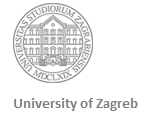Course title: Phonetics and Phonology
Course ID: 235564
Hours: 3L + 1S
Instructors:
Professor Višnja Josipović Smojver; e-mail: vjosipov@m.ffzg.hr; office hours: Tuesday 15:00-16:30, B-008
Mirta Stamenić, assistant; e-mail: mstameni@m.ffzg.hr; office hours: Wednesday 15:00-16:00 and by appointment, B-008
ECTS credits: 6
Language: English
Status: mandatory
Semester: 6th (summer)
Enrolment requirements: Regular enrolment in the 6th semester.
Exam: Written in two parts: Part 1: covered by lectures; written as a whole during the regular summer and autumn terms; Part 2: Transcription test done at home and uploadable on the Omega in the period between June 15 and September 15, 2025.
Course description:
Students are taught the fundamentals of contemporary phonetics and phonology. The course starts with a survey of the basic notions of articulatory phonetics, focusing on the standard pronunciation varieties of British and American English (RP, SSBP, and GenAm). The students are familiarized with the basic approaches of contemporary phonological theory, which are applied to the analysis of the most important English pronunciation phenomena and the formulation of the basic English phonological rules. This also includes suprasegmental phenomena, which are analysed in terms of phonetic transcription, using IPA notational conventions.
Objectives:
Students should learn to approach English pronunciation descriptively, as opposed to the earlier prescriptive approach, which they were used to in the course of pre-university English learning. In order to develop this kind of approach, i.e., to learn how to describe English pronunciation phenomena in a scientific way, through this course the student should develop the ability of selective listening and master the basic notions and terms of phonological and phonetic description.
Obligatory literature:
Cruttenden, A. (2014). Gimson’s Pronunciation of English, 8th ed. London – New York: Routledge.
Lindsey, G. (2019). English after RP: Standard British Pronunciation Today. www.cubedictionary.org.
Reference literature:
Crystal, D. (2008). A Dictionary of Linguistics and Phonetics.6th edn. Oxford: Blackwell.
Pullum, G.K. & W.A. Ladusaw (1996). Phonetic Symbol Guide. The University of Chicago Press.
Wells, J.C. (2008). Longman Pronunciation Dictionary. 3rd edn. with CD: Person Education Ltd.
Further reading:
Beňuš Štefan. (2021). Investigating spoken English: A practical guide to phonetics and phonology using Praat. Palgrave Macmillan.
Carley, P., & Mees, I. M. (2020). American English phonetics and pronunciation practice. New York, NY: Routledge.
Collins, B., Mees, I. M., & Carley, P. (2019). Practical English phonetics and phonology a resource book for students. Routledge
Fabijanić, I. (2016). A Workbook of English Phonetics and Phonology for Students of English. Zadar: Sveučilište u Zadru.
Josipović Smojver, V. (2017). Suvremene fonološke teorije. Zagreb: Ibis grafika.
Mees, I. M., Carley, P., & Collins, B. (2018). English phonetics and pronunciation practice. Routledge.
Small, L. H. (2020). Fundamentals of phonetics: A practical guide for students. Pearson Education, Inc.
Zsiga, E. (2013). The Sounds of Language. An Introduction to Phonetics and Phonology. Oxford: Wiley-Blackwell.
Zsiga, E. (2020). The Phonology/Phonetics Interface. Edinburgh University Press.
Week by week schedule:
1. Introduction: Phonetics and Phonology; types of English pronunciation
2. Speech Production: continuity of speech; three branches of phonetics
3. Articulatory Phonetics: organs of speech and speech production
4. Articulatory gestures, segments of speech and distinctive features; IPA notation and transcription (1)
5. Acoustic phonetics (1): segmental level: spectrograms, Praat
6. English Consonants
7. Vowels: CV Scale
8. English vowels: vocalic systems and subsystems of the mainstream pronunciation standards
9. Phonological Theory: Segmentation of speech and basic notions of phonological analysis
10. Binarity and Distinctive Feature Theory
11. Phonological rules, domains and constraints, contemporary phonological theory
12. The syllable
13. Prosody: rhythm, intonation, typology
14. Connected Speech: coarticulation; universal phonetic processes; English connected-speech phenomena; transcription of English connected speech
15. Allophones and narrow transcription; variability and transcription of standard and non-standard connected speech



